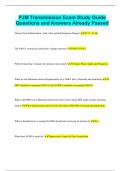Scriptie
Internship Graduation Thesis/Dissertation (Hogeschool Utrecht/HU - IBM)
- Instelling
- Hogeschool Utrecht (HU)
Internship Graduation Thesis for the study International Business Management at the HU University of Applied Sciences (Hogeschool Utrecht). I passed this thesis with an 8 and received the title ''Best Academic Student 2020'' for having the highest grade for the final thesis and oral defence. Th...
[Meer zien]













